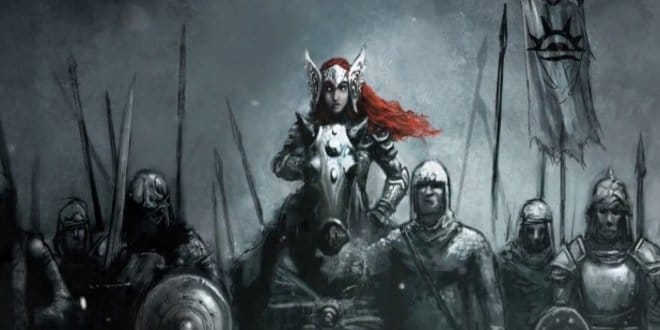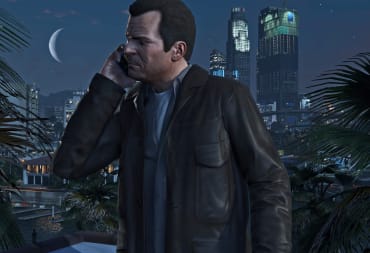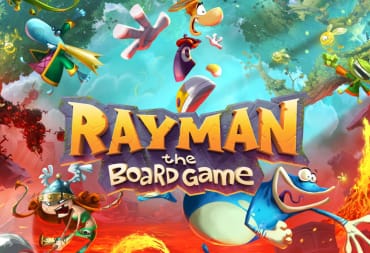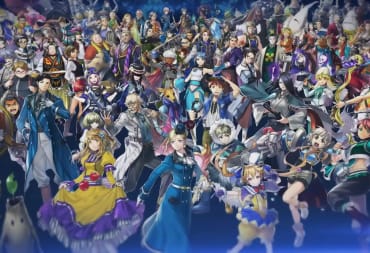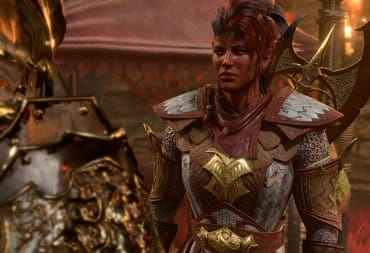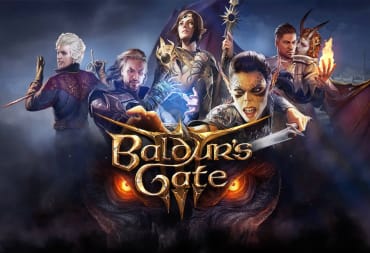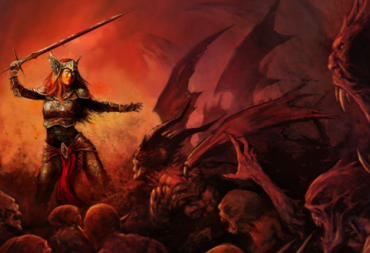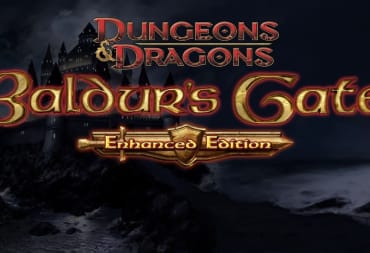What is it about role-playing games that drives us to passion? It seems more than any other genre we have RPG players and developers wear their hearts on their sleeves with ease, to the point of toxic levels of anger when something goes awry. It is especially true when it comes to certain styles of RPGs, most notably the isometric resurgence we have seen in the past few years.
Pillars of Eternity, Divinity: Original Sin, Shadowrun Returns- all of these titles have flaws both minor and major that shackle them to their niche, but all of them were able to do the impossible; they were able to bring the classic, isometric style into 2016. If nothing else, we can’t take away that bragging right from the new crop of titles gracing PC monitors these days. Likewise, it should have been an easy sell for a studio like Beamdog to push a DLC for their enhanced edition version of the BioWare classic, Baldur’s Gate, offering a new story, and content, for a nearly twenty year old game.
Emphasis on should have been. The hurricane of criticism against that expansion, Siege of Dragonspear, is a major indication of unique problems that only an RPG can really have. Dragonspear was always facing an uphill battle to reach any form of acceptance by the RPG community, in part because of its place amongst an important lineage in role-playing history. It’s a shame to, as Siege of Dragonspear is a pretty good expansion to the Baldur’s Gate canon, despite some major flaws that ultimately plague the title.
The campaign, set weeks after the defeat of Sarevok from the original game, pits you, the hero of Baldur’s Gate and the Bhaalspawn, against the Shining Lady Caelar Argent, and her crusade from the North. The goal is simple, after Argent makes an attempt on your life, you lead the Flaming Fist and other followers to put an end to her crusade, and to meet her in battle at her stronghold, Dragonspear Castle.
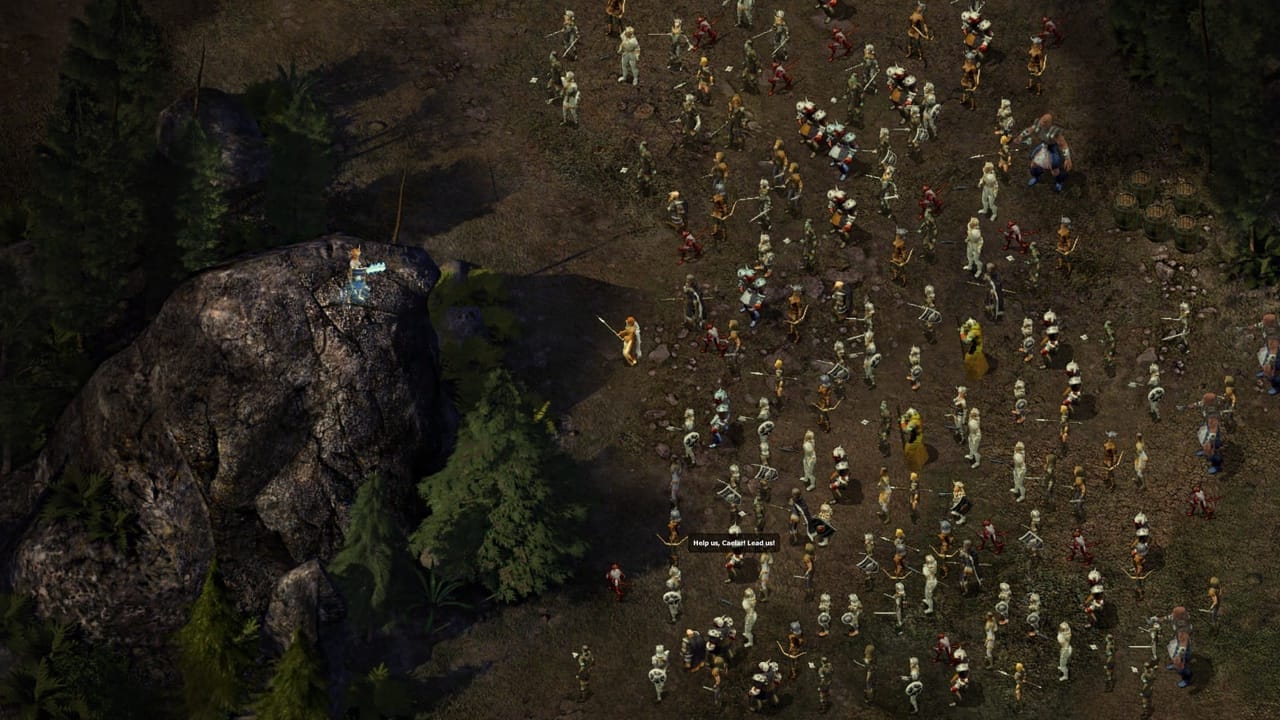
In some respects Beamdog does attempt to streamline Siege of Dragonspear as much as possible, offering the same degree of options as other isometric titles. You now have a new class, new weapons and spells, and even selectable difficulties, allowing for players to either sit back and enjoy the story, or go for a hardcore, tactical challenge. These additions are great in adding more content without changing much of the Advanced Dungeons & Dragons system, which Dragonspear adheres to.
The differences are pronounced in other ways. The original Baldur’s Gate gave players the illusion of an open world, while Dragonspear offers a more straightforward, linear experience, despite optional side quests and dungeon delves in between. Events and characters seem to be written to serve as connecting tissue between the two Baldur’s Gate titles with many ultimately feeling shoehorned in the game. For the unprepared, this difference in tone and presentation can be an unusual experience in its own right, but not a detrimental one; think of it as a GM switching gears, offering a more controlled, yet still choice-dependent, storyline to follow despite railroading to an unavoidable conclusion.
That nostalgic feeling of a new expansion, which requires the Enhanced Edition to play, is the double-edged sword that really drives many of the problems with Dragonspear. Despite the more overt linear structure in the game, it actually follows a lot of the beats of the original Baldur’s Gate, to the point where Dragonspear could have been released in the late 1990s. Much of the DLC feels anachronistic right off the bat; there is a very rough UI and the poor in-game graphics have a flat, muddy look with thick character outlines and blocky movements. The additions made through new items and classes feel like an expansion adding options, and the basic structure of dungeon-delving, resting, and party management is intact, complete without modern mechanics to streamline the monotony of your actions, a major sticking point in old isometric games.
Old is old again in Dragonspear, a problem that is unique to this DLC. See, in serving a player base looking for a classic Baldur's Gate experience, Dragonspear becomes mired in the game's original flaws, leading to the overall product feeling worse for wear. What adds to this is that any changes actually made stand out as the game's weaknesses begin to pile up, leading to a less memorable experience when those said changes themselves suffer from problems. Perhaps the most obvious example of this is the writing in Dragonspear, one of the most criticized aspects of the game since the controversy surrounding the title began.
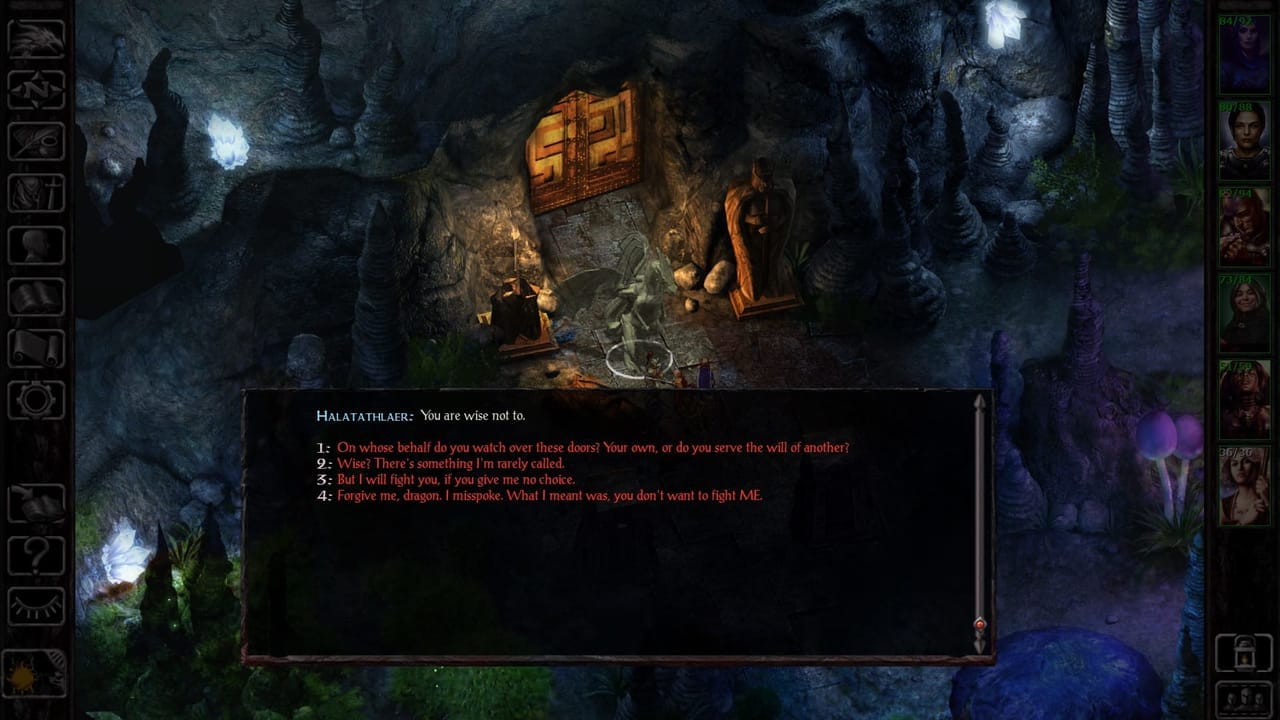
Despite what you might have heard, the game does not push an agenda on its players. Accusations of a “social justice” slant are misinformed or subjective at best, or purposely misleading at worst, not because of the personal politics of the developer, but because of uneven writing. Even then, the complaints about the game's writing, while founded in some truth, have also been grossly exaggerated in some cases. The character of Mizhena is the most famous example, but other characters that people neglect to mention include major and minor NPCs found throughout Dragonspear with the same problems as Mizhena, such as the quartermaster on your march, Belegarm, or even the likes of Jon Irenicus (which is not a spoiler, you know he is involved early on in the adventure) who has some rather cringe-worthy lines to contend with.
The problem with these characters, along with the all-encompassing negative complaints regarding the writing, is their interactions are short and lack the expected depth and polish you would hope from an RPG. Of course, this is a problem that is shared with the original Baldur’s Gate. That game did not have stellar writing, especially when compared to Baldur's Gate II, which contained more in-depth characterization and tighter story progression. Other RPGs in the same vein, both classic and modern, make Dragonspear pale in comparison due to sheer content or cohesiveness of their script. Beamdog sadly loses a lot of points for writing that is ultimately jarring to the experience, be it due to budget constraints or just simply hit or miss editing, while simultaneously trying to add their own stamp with several established characters. Much like everything else, it is wildly uneven; Edwin, Minsc and Daneyhir are major positive standouts, while others such as Skie, Khalid and Safana fall victim to mediocre writing.
It is that uneven tone that has many fans upset, but at the same time it is also reflective of how far RPGs have come since Baldur’s Gate. The original title was never a masterpiece, but it is important to the development of modern role-playing games, especially at a time when RPG's on the PC at least were dead. Any deviation to that original game will no doubt be scrutinized, and any changes magnified for being different. We see the fanbases' desire is to see something fondly remembered remain untarnished by this new take, yet this puts Beamdog in a catch-22; do they emulate the Baldur's Gate style fully, complete with flat characterization, and brief writing, or do they embrace a more modern treatment and give them characterizations that deviate from their source? It is an issue that Beamdog tried to balance, but was ultimately unsuccessful in their execution.
Despite all of these problems, there are moments where the games’ writing simply shines beyond the complaints towards it. The character of Caelar Argent has much complexity towards her; one moment she sends assassins to kill you, the next she pens letters to the families of her fallen followers. She is charismatic, introspective, and makes a good adversary because her goals are not inherently evil, the perfect storm for a dynamic antagonist. Save for some odd, uneven moments, mostly stemming from late-game revelations, Argent is perhaps a more dynamic and complex villain than Jon Irenicus ever was.
New companions also have some good moments attached to them. The skirt-chasing Skald Voghiln and the sarcastic Halfling Glint are not too bad, but feel a bit muted compared to the other two additions. The first is the controversial single mother Corwin, another member of the cast accused of pushing a social justice agenda. However, Corwin has depth and layers to her character that make her both flawed yet compelling, she is somewhat cold and prejudiced, but has moments of introspection that give her dynamics I did not expect. The real standout however is the Goblin shaman M’Khiin; her characterization is so pitch perfect the game; through both story and mechanics it reflects her role as a “monster amongst men” stereotype while not softballing issues of prejudice. She becomes, in my mind, a character arguably on the same level as the likes of Edwin and Minsc in terms of being memorable.
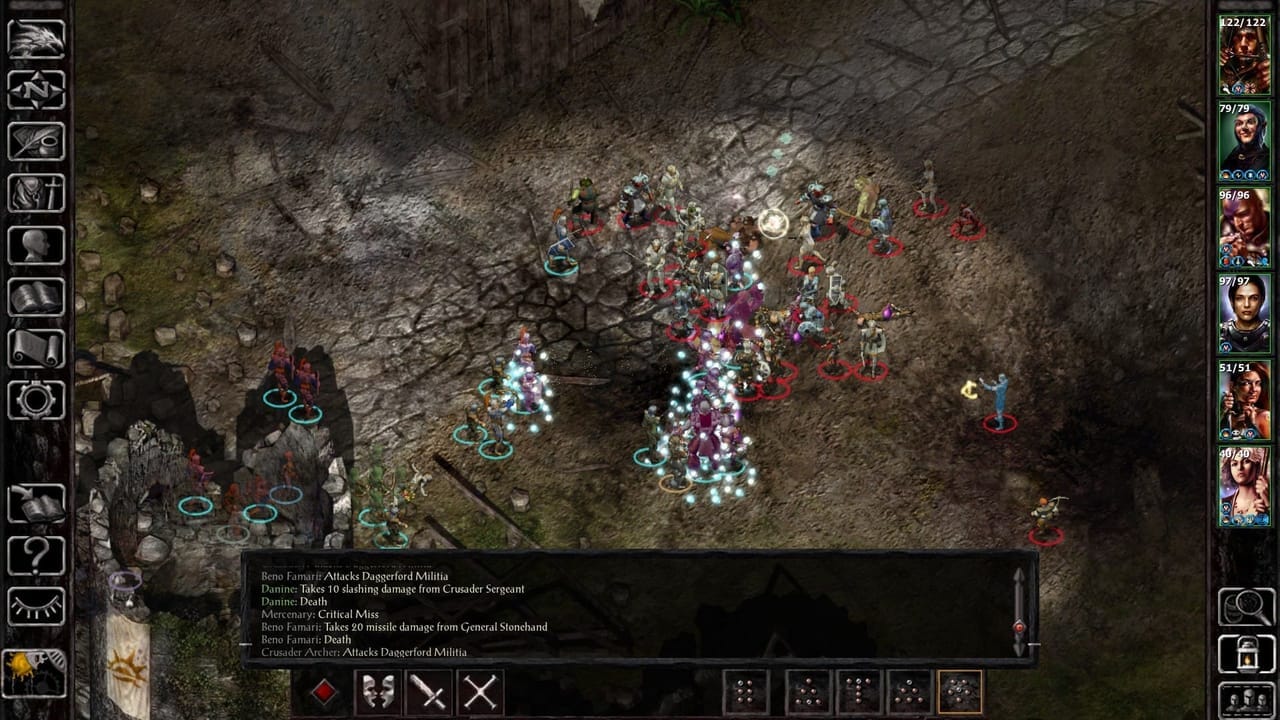
Other positives also come in the vein of new cut-scenes with Beamdog trying to offer something different in Dragonspear. We see large crowds and rousing speeches, both by the player and Argent, that give the story gravitas and an exciting push to keep playing. Some quests have you actually making a moral choice against monster characters, giving them personality and a chance for actual role-playing over being a simple murderhobo. In fact, the game features quite a few quests or even options that involve conversation and charisma over combat and magic, which is something the original Baldur’s Gate lacked at times.
Other new additions in this near thirty hour experience are more of a misstep than a success. Twice in the campaign you get involved in mass battles which can have more than forty characters on-screen. These moments certainly push the game to its limits; frame rates dropped on occasion while my army met the crusaders, and ultimately they were moments of chaos that didn't feel as epic as they should have been. This is another example of Beamdog trying something different from the main game, it just doesn't work as intended. Even the titular siege of Dragonspear Castle is also ultimately disappointing due to these frame rate issues and some writing snags, as is the epilogue to the whole campaign which forces a situation upon the player they have no chance of getting out of.
There is truthfully a lot of good to find in Dragonspear, the problem is it’s mostly buried behind some nagging issues, bugs, or mediocre writing. Starting the DLC fresh locks you in at level seven, while an imported character from Baldur’s Gate could have better equipment and levels, provided importing even works. While Beamdog is hoping to iron out many of the bugs currently plaguing the expansion, some notable big bugs can occur, including the import bug, a difficulty lowering bug (which can’t be changed if this occurs) and other game-breaking problems and in-game crashes. Multiplayer however fares much worse, to the point where it is not only completely broken, but Beamdog specifically made an announcement to try to fix it up as soon as possible. In my own experience, I didn’t encounter any bugs except attempting an import, which failed, so players should indeed play at their own risk.
Other problems come from nitpicks mostly; the lack of a run or double speed option is notably absent, and the clunky UI still adheres to the design limitations in the original Baldur’s Gate. The game shows its age graphically, and even the sound design is uneven. Beamdog tried to get as many voice actors from the original game to come back, and some do fantastic, most notably Jim Cummings and Jennifer Hale. Heidi Shannon, the voice of Jaheria, is notably absent, so instead of recasting the role, all of her dialogue is mute, leading to a very jarring contrast between characters with voice-overs, and characters without them.
This can sum up the experience in a nutshell for Siege of Dragonspear, unintentionally jarring. It is not a bad game by any stretch of the word, and for those familiar with the Baldur’s Gate setting, combat system, or simply want to play a “modern” add-on to an old-school RPG, it should at least be considered for a purchase despite the problems plaguing the title. Passion may drive us to be ardently against something that attempts something new, but that new experience may surprise you if you let it.
Baldur's Gate: Siege of Dragonsphere was reviewed on PC via GOG with a copy purchased by the reviewer and played for over twenty-five hours.
Review Summary
Have a tip, or want to point out something we missed? Leave a Comment or e-mail us at tips@techraptor.net
